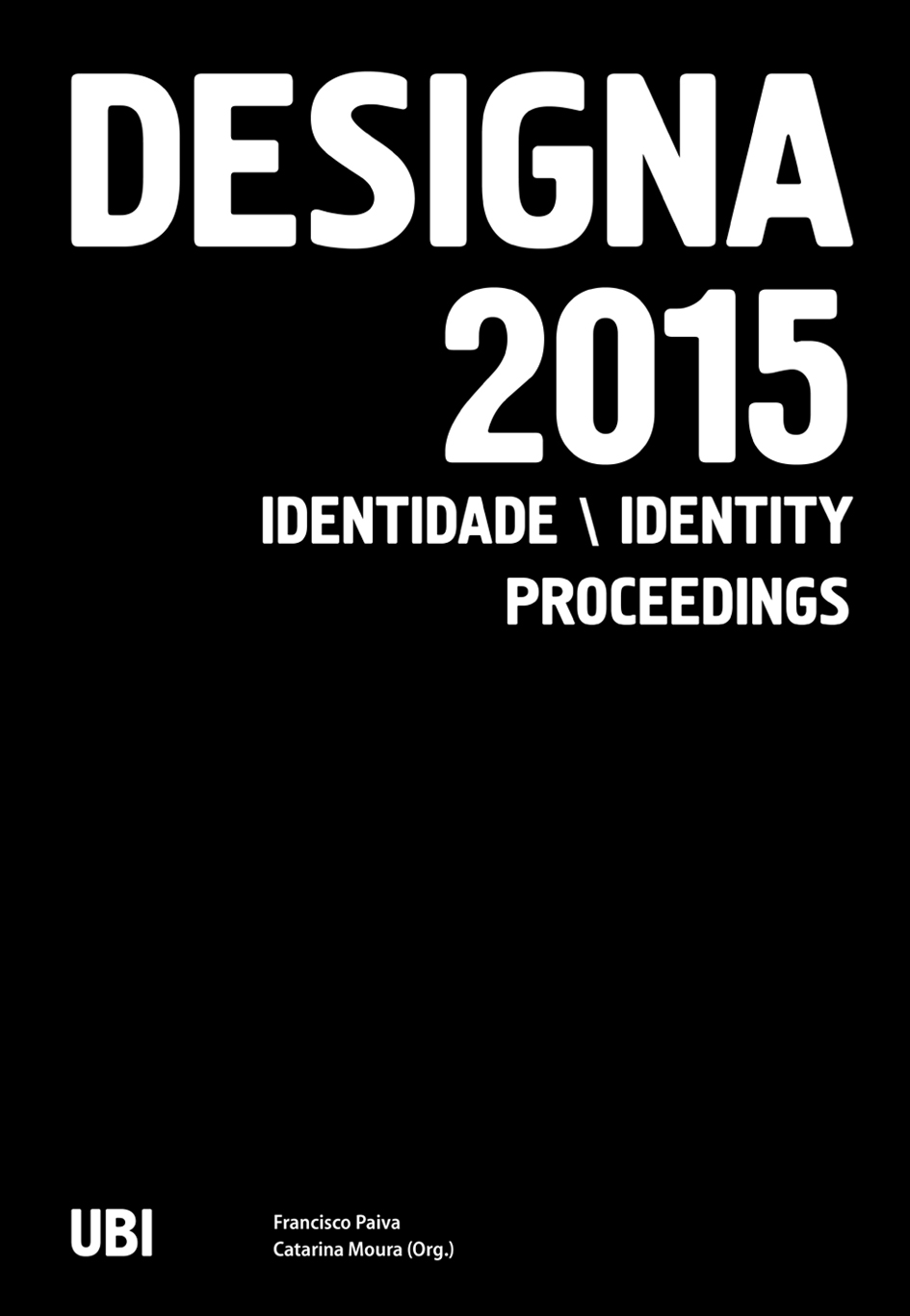DESIGNA 2015 - Identity
Francisco Paiva, Catarina Moura (Orgs.)
Identity reports to the character of things, to the set of characteristics and attributes that make them both recognizable and singular. In the field of design, the concept of identity is frequently used in connection with visual or material differentiation of brands, goods and services, regularly assuming broader connotations in the cultural sphere. This is the one that encompasses exhibitions or shows of products conceived to represent the creative and industrial capacities of certain sector, community or country. Design’s public policies are often and almost exclusively established within this field of expression of national cultural identity in the way its variables remain and become visible in the artistic creation.
But identity is intimately connected to culture and memory, which means that, in culture’s anthropological field, identity approaches the ability to represent, dislocating from the motionless recognition of tradition to the necessary phenomenology of experience. Design is, therefore, part of identity and has its own unique characteristics that respond to people’s restlessness and allow them to recognize themselves in the contemporary world. This Design serves identities, i.e., it translates the ability to interpret and depict the character of their users and addressees.
The issue of identity is quite complex. In general, artists understand that all identity is an assembly and usually escape from the evidence of its stereotypical facet, aware nonetheless of the performance of creation to accomplish certain identities and their communication. Parallel to the scope of perpetuation, Art has helped to unveil hidden identities, often celebrating and assisting them in the assumption of once forgotten centralities. That happens, for instance, with the symbolic performance of visual representation systems, with the recovering and adjustment of ancient typographic matrixes or with the basis of industrial products or building typological sections, when applied to contemporary functions or in dialogue with nowadays creation process.
As a cosmogony, a way of seeing and doing things, identity holds many contradictions. The identification of communities with mass entertainment and alienation is paramount to the formulation of identities. The consumption of goods and services and the interaction with media, videogames and other visual excitement mass media deepen the empathy and popularity phenomena that call communities to identify with certain narratives and develop pattern reactions. The culture of consumption and entertainment is determining to the definition of contemporary identity. A hybrid identity and tendencially global that coexists, with a number of variations, with other local identities.
Throughout history, identities have been a source of major conflicts. In the present moment of great uncertainties it becomes a priority object of research, by the congregation that operates between, on the one hand, myths and their representations and, on the other hand, the risks of vanguard, whose ideological shadows encompass potential paradoxes, polemics and discussions concerning cultural production. The reflection on the essence is conditioned by proprieties and depends on context, language and symbolic, convenes concepts, structures and dynamics that one must understand. Hence, the search for identity is the pretext for discussion and gathering aimed by DESIGNA’s fifth edition.







